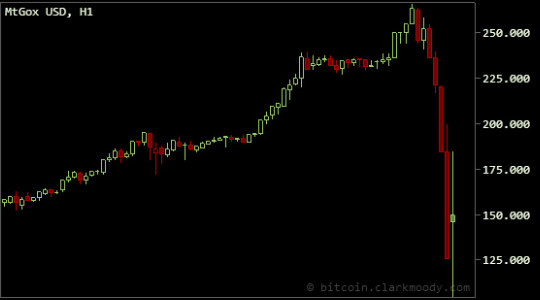Bitcoin History Price – Mysterious Origin Story
The Enigmatic Genesis of Bitcoin
Bitcoin, a digital currency with an unparalleled origin story, traces its roots back to an elusive creator. The enigma begins with Satoshi Nakamoto, a pseudonymous figure whose true identity remains shrouded in mystery. Whether Nakamoto was an individual or a collective effort remains unknown, adding an extra layer of intrigue to the birth of this groundbreaking cryptocurrency. Let’s dive into Bitcoin History Price
During the tumultuous recession of 2008, Nakamoto disseminated a paper on bitcoin through a cryptography mailing list. Simultaneously, the year saw the registration of bitcoin.org as a domain. While the paper outlined the cryptocurrency’s mechanics, it wasn’t until early 2009 that the mining process commenced. January 3rd, 2009, is believed to mark bitcoin’s creation, with a British newspaper hidden in its programming serving as the sole evidence. To this day, Satoshi Nakamoto’s true identity eludes discovery.
The Rollercoaster Price Journey of Bitcoin
From Pizza to Pinnacle: The Early Days
Bitcoin’s initial days were characterized by insignificance. In a peculiar turn of events, the first recorded bitcoin transaction involved a mere 10,000 bitcoins exchanged for a pizza in May 2010. This seemingly trivial event marked the commencement of bitcoin’s tangible circulation.
How did Bitcoin Skyrocket to 10,589.60 USD?
Bitcoin’s trajectory to its current value of 10,589.60 USD per coin is a saga of remarkable fluctuations. Initially underestimated, bitcoin primarily attracted those engaged in illicit activities due to its lack of backing from any nation. The turning point came with the establishment of the Silk Road in 2011, a marketplace where criminals favored bitcoin for its untraceable transactions.
During the Silk Road era, bitcoin experienced significant value oscillations, culminating in an estimated circulation worth over a billion dollars. Its price swung dramatically, ranging from 30 cents to 30 dollars.
The Catalysts of Growth: 2013 and Beyond
Bitcoin’s real ascent began with a substantial correction in 2013. Throughout the year, its price climbed steadily, reaching a historic milestone in November when it surpassed 1,000 USD. This achievement caught the attention of investors, showcasing bitcoin’s ability to hold value against all odds. Despite this growth, skepticism persisted until the collapse of Mt. Gox, a prominent bitcoin exchange.
Bitcoin’s Transition to a Legitimate Currency
Microsoft’s Endorsement and The Economist Spotlight
Bitcoin underwent a pivotal transformation in 2014 when tech giant Microsoft declared its acceptance of bitcoin as a form of payment. The subsequent year saw bitcoin making headlines on the prestigious first page of The Economist.
This surge in attention contributed to bitcoin solidifying its presence in the market. By 2017, the cryptocurrency had evolved into a recognizable entity. The Winklevoss twins played a crucial role, attempting to register bitcoin as the Bitcoin Exchange-Traded Fund with the United States Securities and Exchange Commission. Though their attempt was rejected, it marked a significant step in legitimizing bitcoin. The year concluded with bitcoin achieving a monumental 20,000 dollars per coin, despite initial skepticism from financial heavyweight JP Morgan. However, this meteoric rise was short-lived, and by 2018, bitcoin retracted to 13,000 dollars.
A Rollercoaster Ride Through Time
Bitcoin, the enigmatic digital currency, has embarked on a journey marked by twists and turns. In 2018, it experienced relative stability. The year unfolded amidst numerous cryptocurrency hearings worldwide, particularly in the United States. However, despite nine attempts to legitimize Bitcoin in the standard market, the efforts failed, contributing to a persistent fluctuation in its price.
Bitcoin in 2018: Navigating the Storm
In the preceding year, the crypto landscape was less tumultuous, primarily because of the extensive discussions and debates surrounding cryptocurrencies. The United States and global platforms played host to these discussions. Despite the efforts to bring Bitcoin into the mainstream market, the coin faced setbacks, resulting in continued price volatility.
Legitimization Attempts and Market Response
Throughout 2018, there were nine notable attempts to legitimize Bitcoin within the traditional financial market. Regrettably, each endeavor met its demise, further exacerbating the coin’s instability. The failure of these attempts created ripples, influencing the market dynamics and reinforcing the uncertainty surrounding Bitcoin.
The Resurgence in 2019: Bitcoin’s Ascension
Contrary to the challenges faced in 2018, the year 2019 witnessed a resurgence for Bitcoin and the broader crypto community. Bitcoin, in particular, saw a remarkable climb, reclaiming its position and reaching the noteworthy milestone of $10,000 by August 2019. This marked a significant rebound from the uncertainties of the previous year.
Analyzing Bitcoin’s Trajectory: What Lies Ahead?
As we stand at the crossroads of Bitcoin’s journey, the question arises: Where is Bitcoin trending today? The answer lies in the intricate interplay of market forces, regulatory landscapes, and the evolving sentiment towards digital currencies.
Market Dynamics: The Driving Forces
The fluctuations in Bitcoin’s value are not solely driven by internal factors but are intricately connected to external dynamics. Market sentiment, regulatory developments, and global economic conditions collectively shape the trajectory of this digital asset.
Regulatory Impact: Navigating the Legal Landscape
The regulatory environment, especially in the United States, continues to influence Bitcoin’s journey. With ongoing discussions and potential regulations, the market remains responsive to legal developments, impacting the perceived legitimacy and stability of the cryptocurrency.
Global Perspectives: The Ripple Effect
Beyond the borders of the United States, global perspectives on cryptocurrencies contribute to Bitcoin’s trajectory. Collaborative efforts or regulatory challenges in other countries can either bolster or challenge the digital currency’s standing in the broader financial landscape.
Bitcoin History Price and Important Events
October 5th, 2009: First Bitcoin Exchange rate 1 USD = 1,309.03 BTC
Bitcoin in 2008
- October 31: Satoshi Nakamoto publishes Bitcoin white paper
Bitcoin in 2009
- January 3: The mining of Genesis block – block “0”
- January 9: Bitcoin Version 0.1 launches
- January 12: The first Bitcoin transaction, between Satoshi and crypto activist, Hal Finney
- October 5: First bitcoin price – 1 USD = 1,309.03 BTC
- December 16: Release of Bitcoin version 0.2
- December 30: First Bitcoin difficulty increase
Bitcoin in 2010
- May 22: First Bitcoin transaction for goods. Laszlo Hanyecz spent 10,000 Bitcoins on pizza
- July 12: Bitcoin price increases from 0.008 USD to 0.08 USD due to a mention of Bitcoin v0.3 on slashdot.
- July 17: MtGox, Bitcoin exchange market opens
- August 15: Bitcoin bug is discovered in block # 74638
- September 18: A bitcoin mining pool, slush, mines its first block
- October 1: Open CL, the first public miner starts its operations.
- October 7: Bitcoin price begins to climb after months stuck at $0.06 per BTC
- October 16: First Bitcoin escrow transaction between Diablo-D3 and Nanotube, two Bitcoin forum members
- October 28: First short sale of Bitcoin, 100 coins between two bitcoin forum users
- November 6: Bitcoin price reached 0.5 USD per Bitcoin at MtGox exchange, Bitcoin economy exceeds US$1 million.
- December 9: Bitcoin app for the Nokia N900 launches.
Bitcoin in 2011
- January 27: The biggest bitcoin transaction till that day, on #bitcoin-otc. 100 trillion Zimbabwe dollars worth of 4 BTC.
- January 28: 5.25 million Bitcoins are in existence, which is 25% of the total 21 million bitcoin available.
- February 9: On MtGox exchange the BTC and US dollar has the same value. BTC = 1$
- February 14: The first time that a vehicle, old Porsche, is being put for a sale on bitcoin exchange for 3000 BTC
- March 27: First time Bitcoin is open for exchange with GBP.
- April 16: The Time Magazine publishes an article about Bitcoin
- April 23: On MtGox exchange BTC/USD rate reaches and surpasses the USD/EUR
- June 2: On MtGox, Bitcoin reaches 10$ value
- June 8: On MtGox, Bitcoin Reaches All-Time High of 31.91$ value
- June 12: Great bubble of 2011. Bitcoin exchange rate fell back to nearly 10$, just four days after All-Time High of 31.91$
- June 13: The first bitcoin theft occurs, 25,000 BTC were stolen from a Bitcoin forum member.
- June 14: WikiLeaks accepting donation with Bitcoin
- June 19: Security issues on MtGox exchange results in fraudulent trading and the exchange closes for 7 days. This case forced the MtGox price down to US$17.51 to US$0.01 per BTC.
- August 20: The first Bitcoin conference held in New York City, NY.
- December 12: The biggest bitcoin fee in a single transaction, 171 BTC for block #157235
Bitcoin in 2012
- March: A theft of over 46,00 BTC from a security breach in a web hosting company. Valued at over 228,000$,
- May 11: 18,000 Bitcoin were stolen from the bitcoin exchange, Bitcoinica
- September 3: A bitcoin exchange hacking causes Bitfloor to lose 24,000 BTC (valued at approximately US$250,000)
- September 24: An investigation of Bitcoin Savings decreased the value of Bitcoins by as much as 30%.
- November 15: WordPress accepts Bitcoin as a form of payment.
- November 28: The first Bitcoin Halving, block 210,000. Block reward decrease from 50BTC to 25BTC
Bitcoin in 2013
- February 9: Kim Dotcom, the owner of Mega (cloud storage service) began accepting Bitcoin as a payment form.
- February 19t: Release of the 0.8 version of Bitcoin Client.
- February 22: Bitcoin reached $30 after the last record two years ago.
- February 28: Bitcoin new All-Time High $31.91 after “waiting time” of 601 days.
- March 18: The Financial Crime Enforcement Network (FinCEN) defines its position on virtual currencies
- March 21: New bitcoin All-Time High of $74.90
- March 28: Bitcoin’s total market cap reaches 1 billion USD.
- April 1: Bitcoin reaches $100!
- April 10: Another Bitcoin bubble – New All-Time Hight of $266
- April 20: Bitcoin crashes and losing $160 in value in one day, due to a hack on Bitcoin Central.

Image source
- May 2: The first Bitcoin ATM opens in California.
- August 6th Federal Judge Amos Mazzant of Texas ruled that bitcoins are “a currency or a form of money”
- August 20: The Federal Ministry of Finance in Germany announces that Bitcoin is a form of private money.
- October 2: The FBI shuts down the Silk Road, seizing 3.6 million dollars worth of bitcoins.
- October 14: Baidu, China’s biggest search engine begins accepting Bitcoin
- November 6: Bitcoin reaches a New All-Time High of $269
- November 10: A Subway restaurant in Allentown, starts accepting Bitcoin
- November 17: Bitcoin sets a new record of $503.10
- November 19: Bitcoin price climbs up to a record of US$1242 !!!
- December 5: The People’s Bank of China bans bitcoin transactions, causing a price drop of more than 20% to below $1,000.
- December 6: Baidu stops accepting bitcoins after the People’s Bank of China ban.
- December 17: Bitcoin crashes to $500 after China’s Central Bank ban bitcoin transactions
Bitcoin in 2014
- January 28: Vice-president of the Bitcoin Foundation, Charlie Shrem, arrested over allegations of money laundering in connection with Silk Road
- February 10-12: Bitcoin historical decrease of 30% to $600 due to problems with transactions in several exchanges.
- July: Dell and Newegg are accepting bitcoin as a form of payment
- November 5: Buttercoin, an open-source digital trading engine, US venture-backed bitcoin exchange, is.
- December Microsoft began accepting bitcoin to buy Xbox games and Windows software.
Bitcoin in 2015
- January 4: Bitstamp exchange hacked. The hacker steals 18,866 bitcoins, worth $5.2 million dollars.
- June 3: New York state releases a set of rules to regulate bitcoin and digital currency businesses in the state of New York.
- August 15: Bitcoin core developers, released the Bitcoin XT – a separate version of the bitcoin client software.
- September 18: For the first time the CFTC (Commodity Futures Trading Commission) declared bitcoin as commodities.
- October 31: A British publication published an article called: “The Trust Machine” which featured the bitcoin on the front page of the economist.
- November 3: The Unicode committee accepted the Bitcoin currency symbol
Bitcoin in 2016
- January: The Bitcoin network speed exceeds one exahash/sec.
- February: A Bitcoin block size discussion meeting has been enclosed over thirty individuals, service suppliers, and bitcoin developers.
- March: Japan’s cabinet acknowledges Bitcoin and virtual currencies as a payment
- April: Steam service starts accepting Bitcoin as a form of payment for video games.
- May: An Australian computer scientist, Craig Steven Wright declared that he was Satoshi Nakamoto through a journal post.
- July: In Argentina Uber accepts Bitcoin due to Argentina’s government blocked the use of credit card from dealing with Uber.
- August: About 120,000 Bitcoin were stolen from the Bitcoin exchange Bitfinex.
- September: 771 Bitcoin ATMs worldwide.
- November: Swiss railway (SBB) allows the purchase of bitcoin on their vending ticket machine
Bitcoin in 2017
- January: Thirteen US states have “clearly defined positions and/or regulations in regards to the blockchain and digital currency industry”. The Central Bank of the United Arab Emirates prohibits all transactions in “virtual currencies”, including cryptocurrencies.
- April: A Japanese law that brings bitcoin exchanges under anti-money laundering and know-your-customer rules as well as recognizing bitcoin as a form of prepaid payment instrument comes into effect.
- May: The State Bank of Pakistan states that it does not recognize digital currencies. The Bulgarian Government confiscates 213,519 bitcoins from local cybercriminals.
- June: The People’s Bank of China establishes a research institute dedicated to digital currencies.
- August: Bitcoin Cash launches and becomes the third most valuable cryptocurrency in 1 day. Bitcoin breaks the US$4,000 mark. The Central Bank of Swaziland issued a press release noting that cryptocurrency does not enjoy a legal-tender status in Swaziland.
- September: Bitcoin’s price rises above US$5,000 for the first time. Chinese government regulators issue the Announcement banning initial coin offerings (ICOs) in China. Japan’s Financial Services Agency (FSA) issues operating licenses to 11 Bitcoin exchanges.
- October: IBM and a network of banks begin using digital currency and blockchain software to move money across borders throughout the South Pacific. Bitcoin breaks above US$6,000. The State Bank of Vietnam issues a decree determining that Bitcoin and other virtual currencies are not legal means of payment.
- November: Bitcoin value reaches US$10,000 for the first time. The Commercial Register Office in the Swiss Canton of Zug starts accepting Bitcoin and Ethereum as payment for administrative costs. Bitcoin Gold is launched.
- December: the Unites States regulator Commodity Futures Trading Commission announces it would let the Chicago Mercantile Exchange and Chicago Board Options Exchange trade in Bitcoin-related financial contracts. The Iraqi Central Bank prohibits the use of cryptocurrencies. The 16 millionth Bitcoin is mined, 5 million remain. Kuwait’s Ministry of Finance announces it does not recognize cryptocurrencies for purposes of official commercial transactions. The National Bank of Georgia confirms that cryptocurrency is not legal tender in Georgia. South Korea’s government announces the imposition of additional measures to regulate speculation in cryptocurrency trading within the country. The acting President of the Bank of Guatemala confirms that both Bitcoin and other types of cryptocurrencies are not legal tenders in the country. Algeria issues law prohibiting the use of any cryptocurrencies. The Reserve Bank of Zimbabwe notes that virtual currencies are not legal tender in Zimbabwe.
Bitcoin in 2018
- January: The municipality of Chiasso, in the Swiss Canton of Ticino, starts accepting Bitcoin as tax payments. Bitcoin price falls to as low as $9,199.59 after Chinese authorities say they will strengthen a ban to prevent its citizens from using cryptocurrency exchanges. Coincheck, Japan’s largest cryptocurrency OTC market, is hacked. US$530 million of the NEM are stolen, causing Coincheck to indefinitely suspend trading. Samsung starts mass-producing Bitcoin mining chips in partnership with an unidentified Chinese mining company. Facebook bans people entirely from advertising Bitcoin and other cryptocurrencies amid fears they are used for fraud. The Central Bank of Ecuador states that Bitcoin is not an authorized payment method in this country. The government of India states that cryptocurrencies such as Bitcoin are not legal tender in the country.
- February: Scientists working at a top-secret Russian nuclear warhead facility are arrested for allegedly using one of the country’s most powerful supercomputers to mine Bitcoins. The Israeli government confirms that it would treat bitcoin and other cryptocurrencies as a kind of property instead of currency.
- March: Google announces a ban of all adverts for cryptocurrencies, including Bitcoin and initial coin offerings (ICOs). Bitcoin valuation briefly falls below US$8,000 after the announcement. A Presidential Decree in Belarus permits buying, selling, exchanging, and mining cryptocurrency. Income generated by mining and operations in cryptocurrencies is exempt from taxation until 2023. Mexico enacts a law that includes a chapter on cryptocurrencies, defining them as a means of payment for all types of legal transactions.
- April: The Central Bank of Iran announces a ban on the handling of cryptocurrencies by all Iranian financial institutions. The 17 millionth of 21 million Bitcoins are mined.
- May: Banco Masventas, a bank in Argentina, starts using Bitcoin for cross-border payments.
- August: 3,500 Bitcoin ATMs (BATM) are installed worldwide.
- September: Hackers steal 6.7 billion yen (US$60 million) in Bitcoin and two other cryptocurrencies from Japan-based cryptocurrency exchange Zaif.
Bitcoin in 2019
- January: Coinstar announces it will start selling Bitcoin at grocery stores.
- June: The French education ministry announces the inclusion of Bitcoin in the school curriculum.
- October: The 18 millionth bitcoin is mined.
- November: Bitcoin Cash Ecosystem Fund is launched.
Bitcoin in 2020
In 2020, the price of bitcoin experienced several significant events that had a major impact on its value. Some of the most notable events include:
- The Halving: In May 2020, the bitcoin block reward halved, reducing the rate at which new bitcoins are created. This event, which occurs every 210,000 blocks, is widely considered to be a bullish signal for the price of bitcoin, and many investors had predicted that the halving would lead to a significant increase in the price of the cryptocurrency.
- Coronavirus pandemic: The outbreak of the coronavirus pandemic in early 2020 had a significant impact on global markets, with many investors turning to safe-haven assets like gold and bitcoin. As the pandemic spread and governments around the world implemented lockdowns and other measures to slow its spread, the price of bitcoin began to rise, reaching an all-time high of over $10,000 in February 2020.
- Black Thursday: On March 12th, 2020, the price of bitcoin dropped by more than 50% in 24 hours, falling from around $8,000 to less than $4,000. This sudden and dramatic drop in price was triggered by a combination of factors, including panic selling as investors sought to liquidate their assets in response to the global economic downturn caused by the coronavirus pandemic, and a drop in the demand for bitcoin as a safe-haven asset.
- The steady climb: After Black Thursday, Bitcoin start to recover, and the price of bitcoin began to climb steadily, reaching new all-time highs in November and December, as investors continued to pour money into the cryptocurrency on the expectation that it would continue to rise in value. The price of bitcoin reached its highest point of the year, above $28,000, in December 2020.
- The market correction: As the New Year began, the market sentiment changed and in January 2021, the price of bitcoin experienced a significant correction, falling from its all-time high of over $28,000 to around $32,000. Some analysts attributed this correction to profit-taking by investors who had made significant gains in the previous months, while others pointed to a general market downturn triggered by concerns over regulatory changes and other factors.
- February: The Chinese government shuts Bitcoin mining farms in order to contain the outbreak of the COVID-19 epidemic in the country.
- May: American hedge fund manager Paul Tudor Jones reportedly buys Bitcoin as an inflation hedge.
- June: Asia-Pacific bottling company Coca-Cola Amatil starts offering Bitcoin payment options in Australia and New Zealand, with more than 2,000 vending machines in those countries letting customers buy a Coke with bitcoin.
- October: PayPal announces a new service allowing all users in the United States to buy, hold, or sell bitcoin using PayPal.
- November: A senior Citibank analyst predicts that Bitcoin could potentially reach US$318,000 in value by December 2021. Bitcoin reaches a new all-time high of $19,860.
- December: American financier Anthony Scaramucci launches the SkyBridge Bitcoin Fund, an institutional-grade fund to invest in Bitcoin.
Bitcoin in 2021
- In 2021, the price of bitcoin has continued to experience significant fluctuations, with several notable events impacting its value. Some of the most significant events include:
- The institutional adoption: The start of the year saw a significant increase in institutional adoption of bitcoin, with several major companies, such as Tesla, MicroStrategy, and Square, announcing that they had invested large sums of money in the cryptocurrency. This institutional adoption was seen as a bullish sign for the price of bitcoin and contributed to its steady climb throughout the first quarter of the year.
- The all-time high: In April 2021, the price of bitcoin reached a new all-time high of over $64,000. This milestone was driven by a combination of factors, including continued institutional adoption, a growing interest in bitcoin as a hedge against inflation, and a general sense of optimism about the future of the cryptocurrency.
- The market correction: In May 2021, the price of bitcoin experienced a significant correction, falling from its all-time high of over $64,000 to around $30,000. This correction was triggered by a number of factors, including concerns about regulatory changes in China, a general market downturn, and profit-taking by investors who had made significant gains in the previous months.
- The China Ban: In May, China announced a crackdown on the cryptocurrency market, leading to a major sell-off in the market, including Bitcoin. Banks and payment companies were banned from providing services related to cryptocurrency transactions, and individuals and institutions were prohibited from buying or selling Bitcoin and other cryptocurrencies.
- The steady climb again: After the market correction, the price of bitcoin began to climb again, reaching new all-time highs in November and December, as investors continued to pour money into the cryptocurrency. The price of bitcoin reached its highest point of the year, above $64,000, in December 2021.




